The Brembana Valley is the ideal place for a vacation that brings together outdoor life, culture and relaxation. The Val Brembana is nestled between the spurs of the Orobic Alps and preserves within it fairy-tale landscapes and villages that seem to come straight out of a postcard from the past. The Val Brembana is a continuous succession of villages full of history to be discovered at a slow pace, losing oneself in the narrow streets, alleys and small squares and being enraptured by the simple profile of the ancient peasants’ houses, its churches, but also its splendid Art Nouveau palaces. The Val Brembana is a place to relax, pampered in the magnificent San Pellegrino spa with its famous architecture reminiscent of the splendor of a bygone era. However, the Val Brembana is also a perfect place for those who want to go wild with many outdoor activities. From the snow-covered ski slopes during the winter to the many trails dedicated to trekking and mountain biking enthusiasts, there is no shortage of opportunities to embark on daring descents or stroll while savoring all the beauty of nature up close. Here are ten must-see stops on your trip to the Brembana Valley.
One of the jewels of the Brembana Valley is Cornello dei Tasso. Included in the list of Italy’s most beautiful villages, wandering through its ancient streets is like stepping back in time to the Middle Ages. For centuries Cornello dei Tasso was the most important commercial center of these lands thanks to the ancient via Mercatorum, which connected the Brembana Valley with Valtellina. Beginning in the 17th century, however, the construction of the new road, the Priula, decreed the gradual end of Cornello’s fortunes, which even today seems to have remained as eternally immortalized to the atmospheres of times gone by. This isolation has, on the other hand, favored the preservation of the original urban fabric, which is characterized by the superimposition of four different building plans. In the lower part, the buildings rise directly above the Brembo River and still bear witness to how they were originally part of the village’s fortifications. Slightly higher up, however, is one of the most characteristic elements of Cornello dei Tasso, the monumental portico under which the via Mercatorum passed. The village then continues to develop, alternating between simple houses and beautiful buildings up to the Romanesque church of Saints Cornelius and Cyprian, which dominates the town from above.
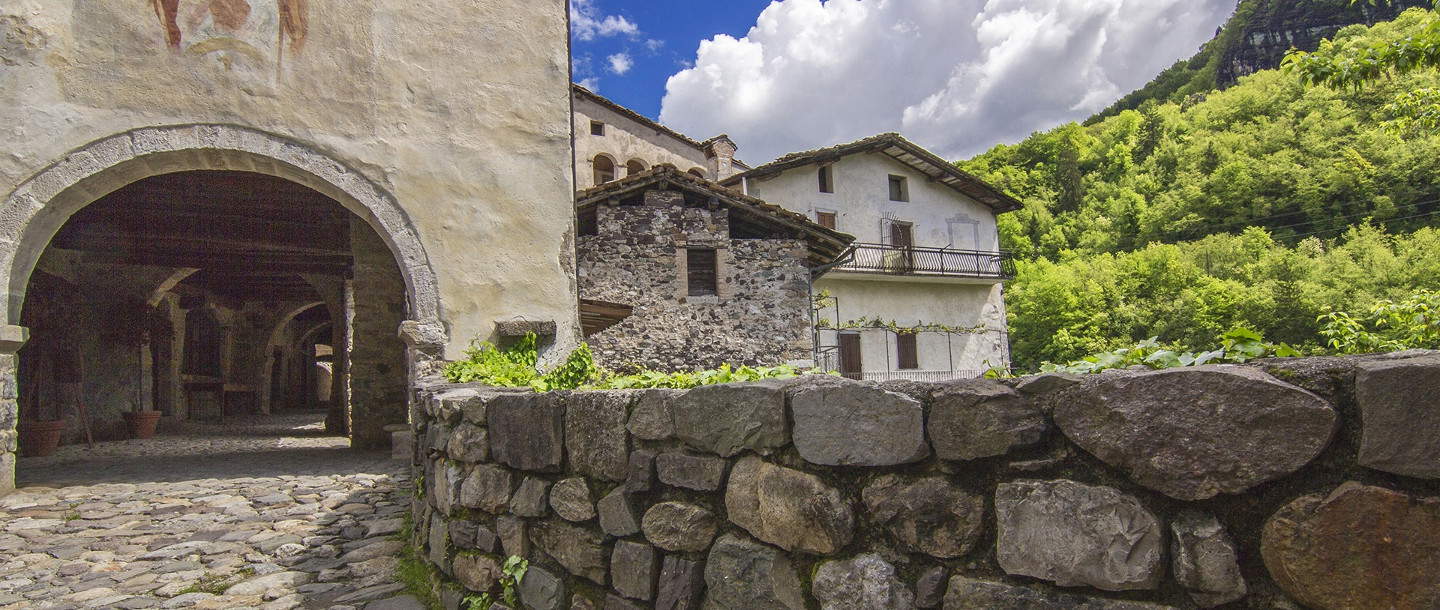
San Pellegrino Terme: thermal waters, towering mountains and unparalleled style. Just 20 kilometers from Bergamo lies one of the most famous spas in the Belpaese. San Pellegrino Terme has been known for centuries for the quality of its waters, but it also has much more to offer. San Pellegrino Terme lies in the heart of the Brembana Valley, nestled along the banks of the Brembo River that bisects the town. All around San Pellegrino Terme it is the majesty of nature that dominates, but when you walk through the streets of the town to enrapture the visitor’s eye are also the many architectural gems that adorn its streets. In San Pellegrino one can still breathe in the magical atmosphere of the Belle époque of the early 20th century rendered to perfection by the facades of the many Art Nouveau buildings. Not to be missed then is a bath in the pools of the Qc Terme, over six thousand square meters dedicated to wellness among marvelous frescoes, colonnades and early 20th century ceilings. Unmissable then are the emotions that can be experienced by going to discover, on foot or by bicycle, the many paths that start from San Pellegrino Terme and wind along the Brembana Valley.
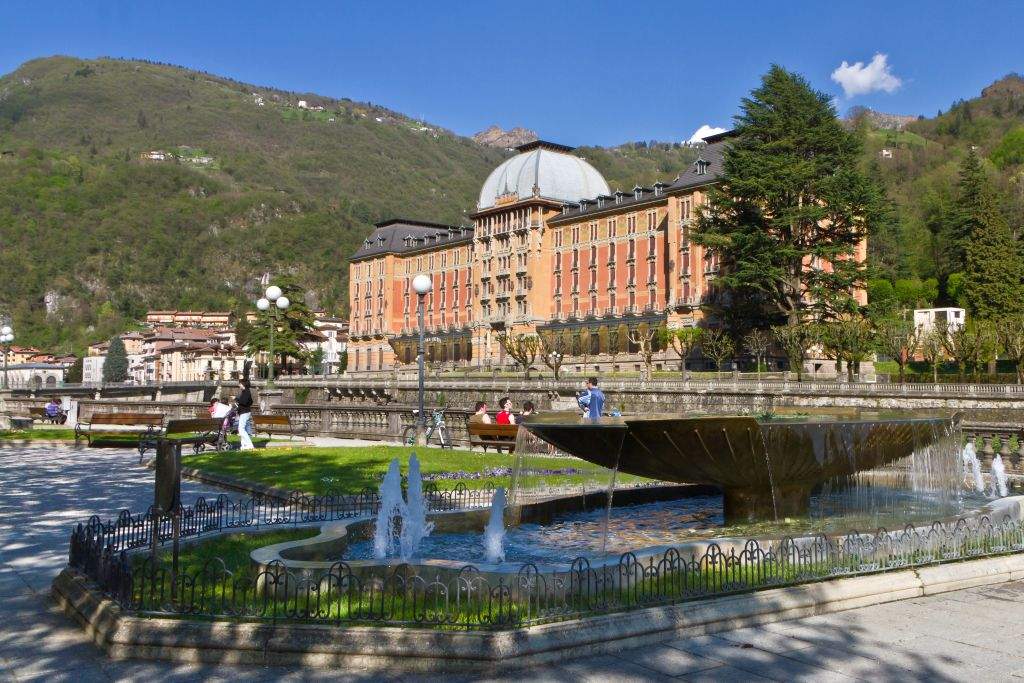
A magical world beneath the surface of the Brembana Valley. The Dossena mines have now stopped their centuries-old activity for decades and have become one of the most popular destinations for travelers and tourists. The history of the Dossena mines goes back as far as Etruscan times, but it was under the Roman Empire that they experienced their ultimate development. In the bowels of the Brembana Valley, generations and generations of inhabitants of these places worked, who, until the middle of the last century, helped create an incredible system of tunnels with the strength of their arms alone. Even Leonardo Da Vinci took an interest in these mines, who at the dawn of the 16th century drew schematic maps of the entire Val Brembana, while in the 1950s Dossena was even taken care of by Nasa, which used the fluorspar mined here in the fuels for its carrier rockets that carried astronauts to the moon. Since 2015 the mines can be visited and access is at Paglio, from here begins an exciting journey into the heart of the mountain following the footsteps of the miners.
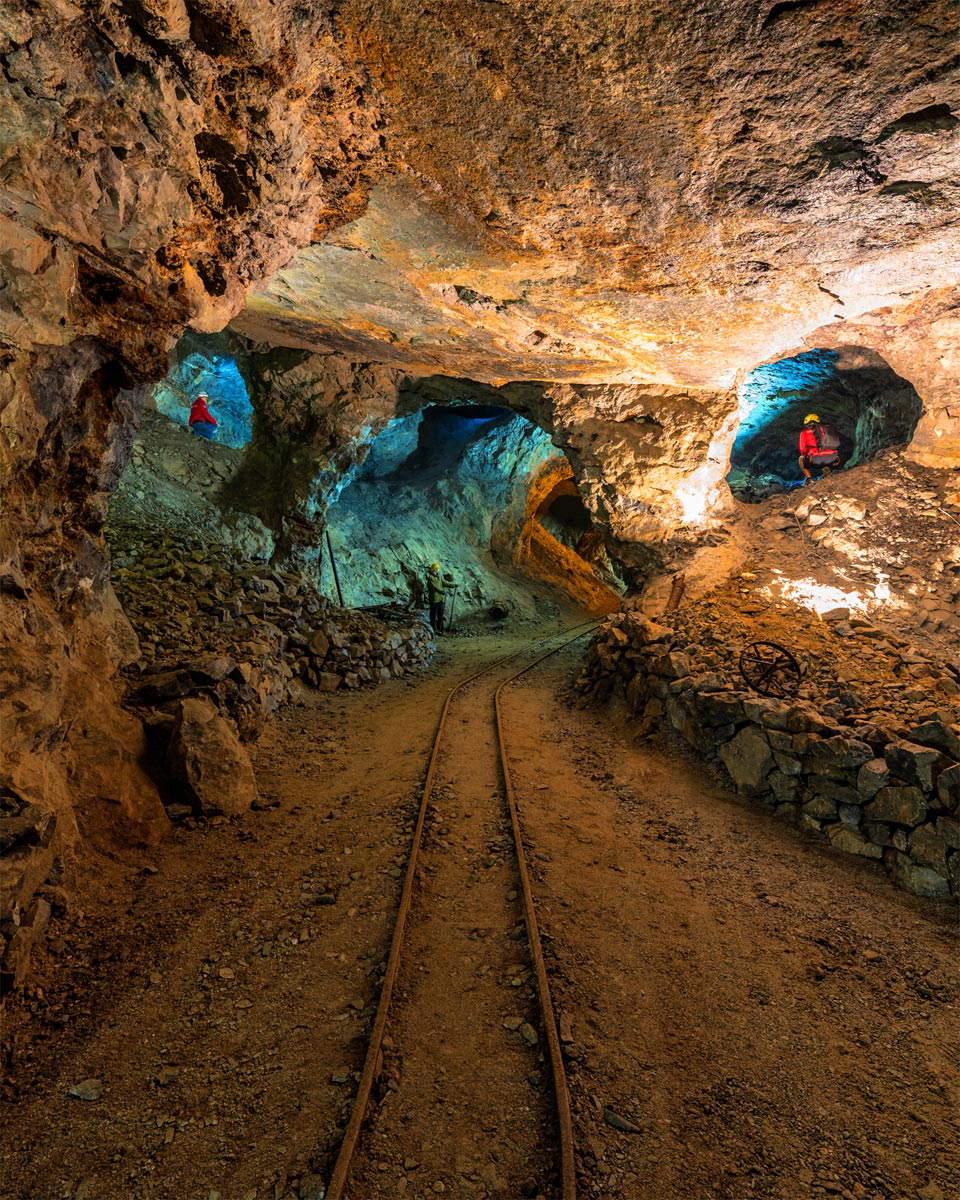
A cathedral composed only of trees completely immersed in nature. This is the Vegetal Cathedral, one of the symbols of the Monte Arera project, a project desired by the Orobie Bergamasche Park and the municipalities of Oltre il Colle, Roncobello and Ardesio. The project aims to revive and enhance the richness and uniqueness of the alpine plant species that grow in the Park and on the ridges of the Orobie Bergamasche. It is a land art installation conceived by Lodi-based artist Giuliano Mauri, who designed what is an authentic cathedral whose unmistakable profile is outlined by tall wooden columns that hold within them a beech tree. This over the years will grow more and more until it destroys the structure that contains it. In this way, nature will symbolically take over by taking over its own space. All components of the structures were made from materials recovered from nature: fir, chestnut and hazel trees
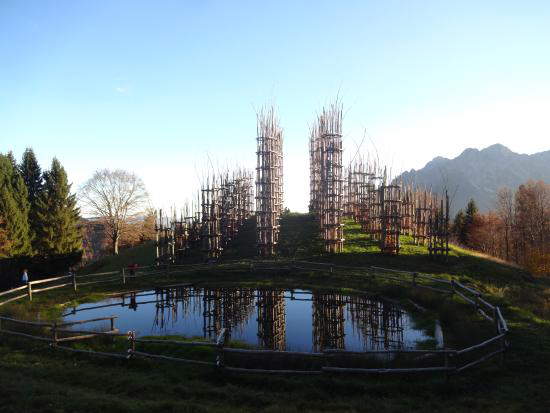
Good food, skiing, hiking and relaxation. Branzi offers visitors everything one could want from an alpine resort. Numerous hikes along the Orobie trails depart from here, while several ski resorts are nearby in winter. For those who enjoy walking in nature, there are no less than eleven lakes around Branzi, including artificial and natural ones, and all of these are at the center of picture-postcard views and are surrounded by splendid mountain huts. The village of Branzi itself, however, is a little gem that not only offers numerous opportunities for recreation and entertainment among hotels, clubs and restaurants to suit all tastes, but also preserves important examples of the art and culture of these lands, starting with the striking church of San Bartolomeo, which stands out for its large altar rich in polychrome marble and a beautiful rosary altarpiece. Impossible then to leave Branzi without tasting the cheese of the same name, one of the oldest delicacies of these lands.

Centuries-old traditions, breathtaking views and the big heart of its inhabitants. Among the most characteristic places in the Brembana Valley is certainly San Giovanni Bianco. For some, this place is reminiscent, due to the multifaceted character of its inhabitants and the changing spectacle offered by the environment that surrounds and embraces it, of Harlequin, the mask par excellence of the national tradition that is said to be linked to these lands. Century after century, on the other hand, the historic center of San Giovanni Bianco has remained virtually unchanged with its houses that, leaning against each other, give life to views that seem to have emerged from the quick strokes of an impressionist painter. There are also no less than seven bridges in perfect Romanesque style that give the entire village an unmistakable character. There are many things not to be missed in San Giovanni Bianco, starting with Harlequin’s house, located in the nearby hamlet of Oneta: an ancient 15th-century aristocratic palace still perfectly preserved. Also of particular interest are the great celebrations held in the two weeks before Easter when the Feast of the Holy Thorn is scheduled.
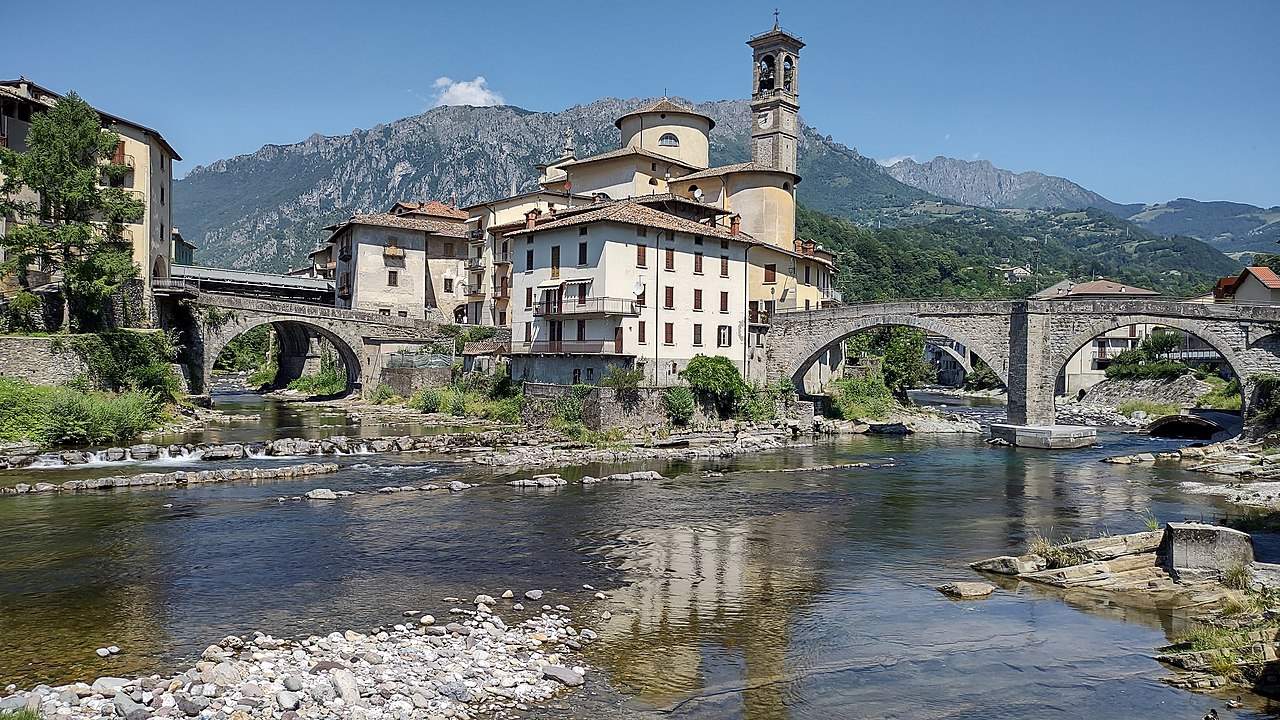
The Zogno Valley Museum is perhaps the place in this entire area where it is possible to get most in touch with its traditions and customs. Inside the Valley Museum those places and customs that for centuries have been at the center of the daily life of the inhabitants of the Brembana Valley are brought back to life in their environment: the house, the stable, the courtyard and, more generally, the countryside. All this is possible by showing the use of the different objects now forgotten by most people. Walking through the Museum of the Valley, one can thus pass one after another from the blacksmith’s forge to the ancient kitchen that was present in all the houses of the Bergamasque mountains, and then take a closer look at what the bedrooms or the village tavern looked like. Entire rooms are then devoted to grazing and work in the fields, milk processing and how clogs were made, hunting and cobbler’s work, and then more space for domestic tools. Finally, very impressive are the sections devoted to candlesticks, games, looms, puppets and lamps, as well as folk religiosity, paleontology and archaeology.
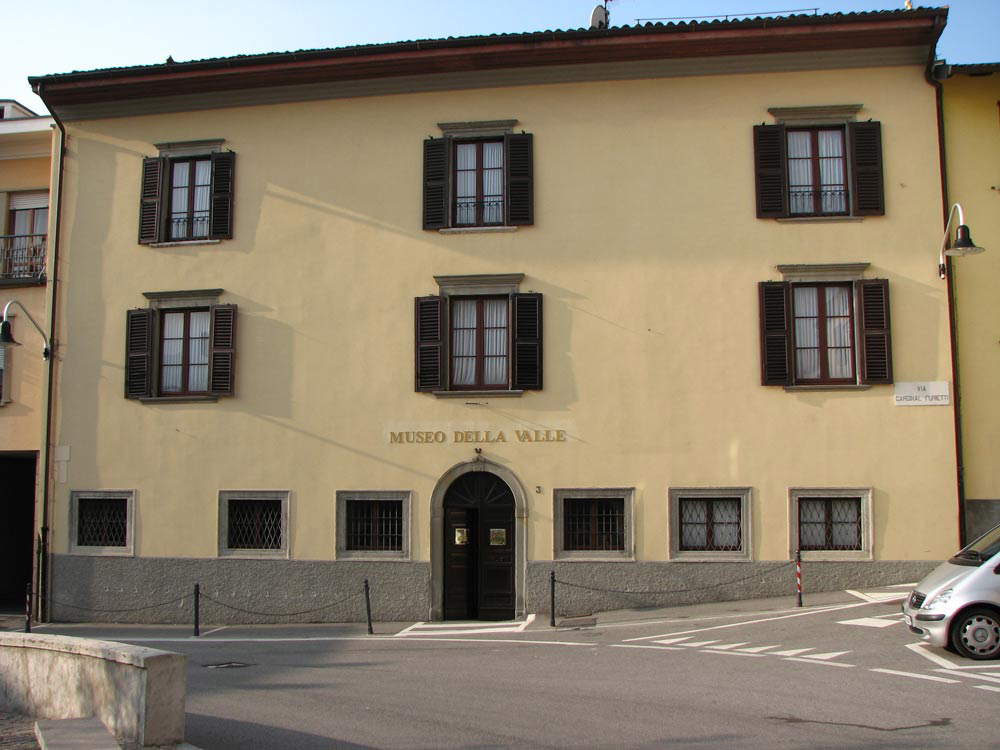
Simple, but impossible to miss. The church of Sant’Ambrogio has towered amid the woods of Pizzino, a hamlet of the nearby town of Taleggio, since the year 1000. Since then this, which is the main place of worship in these lands, has undergone continuous transformations that have continually changed its face. The current appearance dates back to 1714 when the foundation stone was laid according to the design of Swiss architect Antonio Berregio. The result is a striking church, endowed with a beauty without many frills, but able to make the visitor well perceive all the sacredness of the place where it is located. The church faces south, and in front of the facade is a large porphyry churchyard; inside there is a single nave characterized by cross vaults and divided by pilasters into three bays. To the left of the first bay is the baptistery in the chapel enclosed by the gate, to the right is the altar of St. Louis Gonzaga. The presbyteral area, on the other hand, is anticipated by the triumphal arch and bordered by a gray marble balustrade.
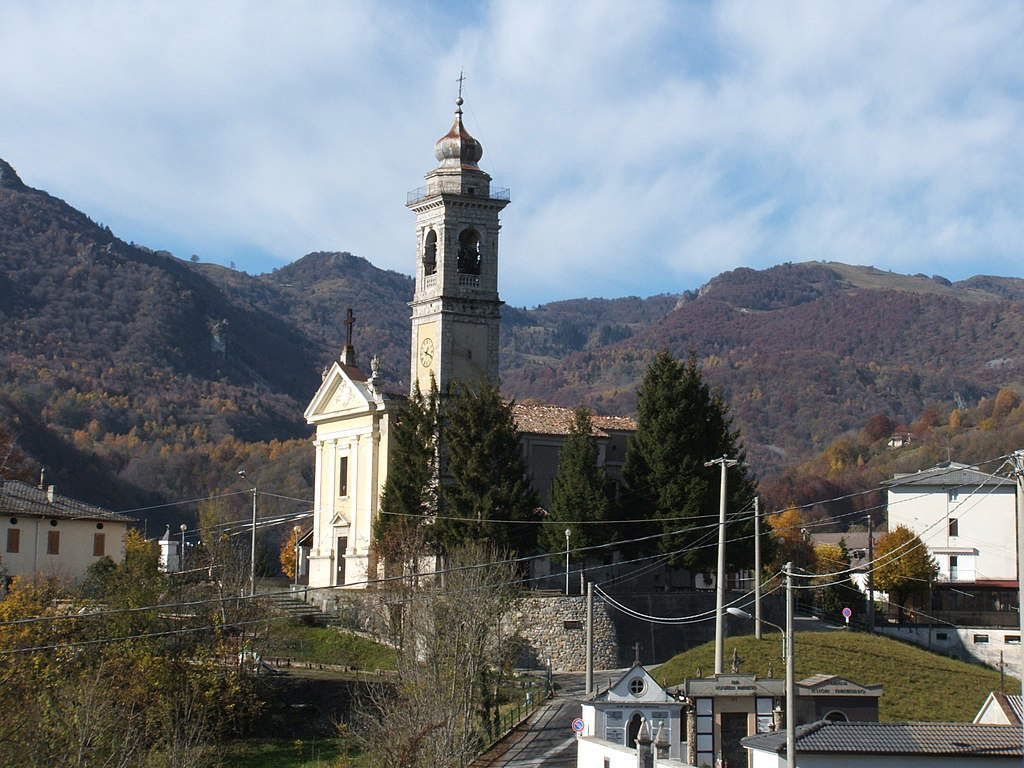
Serina has long been the capital of the Brembana Valley and the seat of the Venetian vicariate. This town has for centuries been the center of all administrative, economic and cultural activities in the valley, and this being the center of the territory has left important artistic and architectural evidence. Walking through Serina, one immediately notices the important stately buildings with their wide, severe stone arches overlooking the narrow streets of the Mezzacà district, the ancient center of the village. On the palaces still stand out the vestiges of this land’s past, and among them to certainly deserve the most attention is the 15th-century Palazzo del Vicario marked by a precious fresco with the lion of St. Mark. Over the centuries the palace has been modified several times, but it still retains clear traces of its ancient functions with its imposing windows with stone arches, protected by ancient grilles, austere inner halls that hosted meetings and an audience hall decorated with the coats of arms and names of the different vicars who succeeded each other over the centuries.

One of the most important places of worship in the entire Val Brembana, the sanctuary of the Madonna del Perello, also known as the Santuario del Bosco or Santuario dell’Olivo, is still a place that preserves intact a mystical aura that is the object of a devotion that is handed down from generation to generation by the locals. The Sanctuary of the Madonna del Perello is located in the territory of the Parish of Algua, in the Serina Valley, and stands where, according to tradition, on July 2, 1413, Our Lady appeared to a farmer from Rigosa, Ruggero Gianforte De Grigis, while he was mowing hay and caused an olive branch to grow from a dried-up beech stump. Immediately thus began the construction of the sanctuary, which preserves interesting 15th-century frescoes inside, although what strikes the visitor most of all is the austere beauty of the sanctuary, which, surrounded by the lush nature of the Val Brembana, century after century has always hosted so many pilgrims, bewitching them with its discreet charm and unique atmosphere capable of transmitting great inner peace.
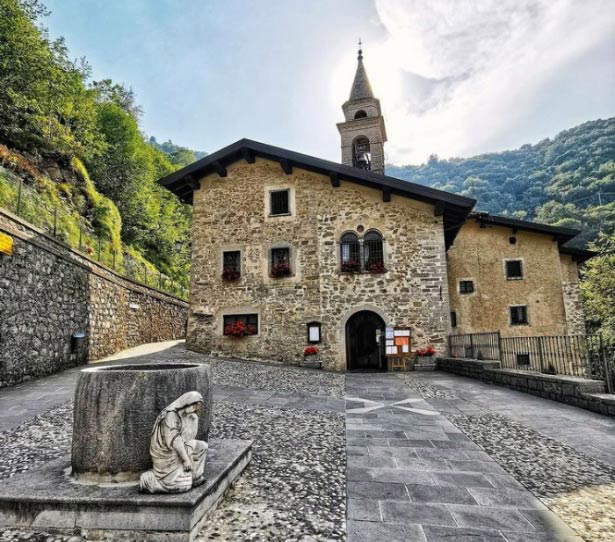
 |
| Val Brembana, what to see. A journey in 10 stages |
Warning: the translation into English of the original Italian article was created using automatic tools. We undertake to review all articles, but we do not guarantee the total absence of inaccuracies in the translation due to the program. You can find the original by clicking on the ITA button. If you find any mistake,please contact us.